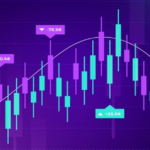In addition to chart patterns and indicators, technical analysis involves the study of wide-ranging topics, such as behavioral economics and risk management. The goal behind technical analysis is usually to identify trading opportunities and capitalize on them using a disciplined, rules-based approach that maximizes long-term risk-adjusted returns.
Build a Foundation
The first step in learning technical analysis is gaining a fundamental understanding of the core concepts, which is best accomplished by reading books, taking online or offline courses, or reading through educational websites covering these topics. Many of these resources are free, but some educators, workshops, or courses charge a fee.
Countless trading books have been authored and some on technical analysis have withstood the test of time and are go-to resources for novice traders. Also, many courses are also available on and offline, including Investopedia Academy’s Technical Analysis.
Importantly, many online trading courses promise spectacular results and use high-pressure sales tactics, but do not deliver the promised results. Novice traders might want to avoid courses that boast about unrealistic returns and, instead, seek out educators that teach the core fundamentals of technical analysis.
Practice and Develop Your Skills
After learning the ins and outs of technical analysis, the next step is to take the principles from these courses and apply them in practice through back testing or paper trading.
Traders developing automated trading systems can use back testing to see how a set of rules would have performed using historical data. For example, a trader might develop a moving average crossover strategy that generates a buy signal when a short-term moving average crosses above a long-term moving average and vice versa. The trader could then back test the system to see how it would have performed over the past several years.
It’s important to keep in mind that trading systems generating compelling returns using historical data aren’t guaranteed to perform well in live markets. In fact, sufficiently complex trading systems can be “curve fit” to perform perfectly using historical data, but won’t be of much use in the future. The best trading systems employ a simple set of rules that perform profitably and are flexible enough to perform well in both the past and in the future.
What Is Technical Analysis?
In the financial markets, technical analysis is the study of behavioral economics, risk management and trends, all of which can be applied to trading. It involves using price action to make predictions about future stock movements.
What Is Technical Analysis Used for?
Traders use technical charts to assess a stock or index’s strengths and weaknesses, price action, trends, and volume. Through this process, traders can predict stock movement, typically in the short-term.
The Bottom Line
The best way to learn technical analysis is to gain a solid understanding of the core principles and then apply that knowledge via back testing or paper trading. Thanks to the technology available today, many brokers and websites offer electronic platforms that offer simulated trading that resemble live markets.












Great, Thanks for sharing information